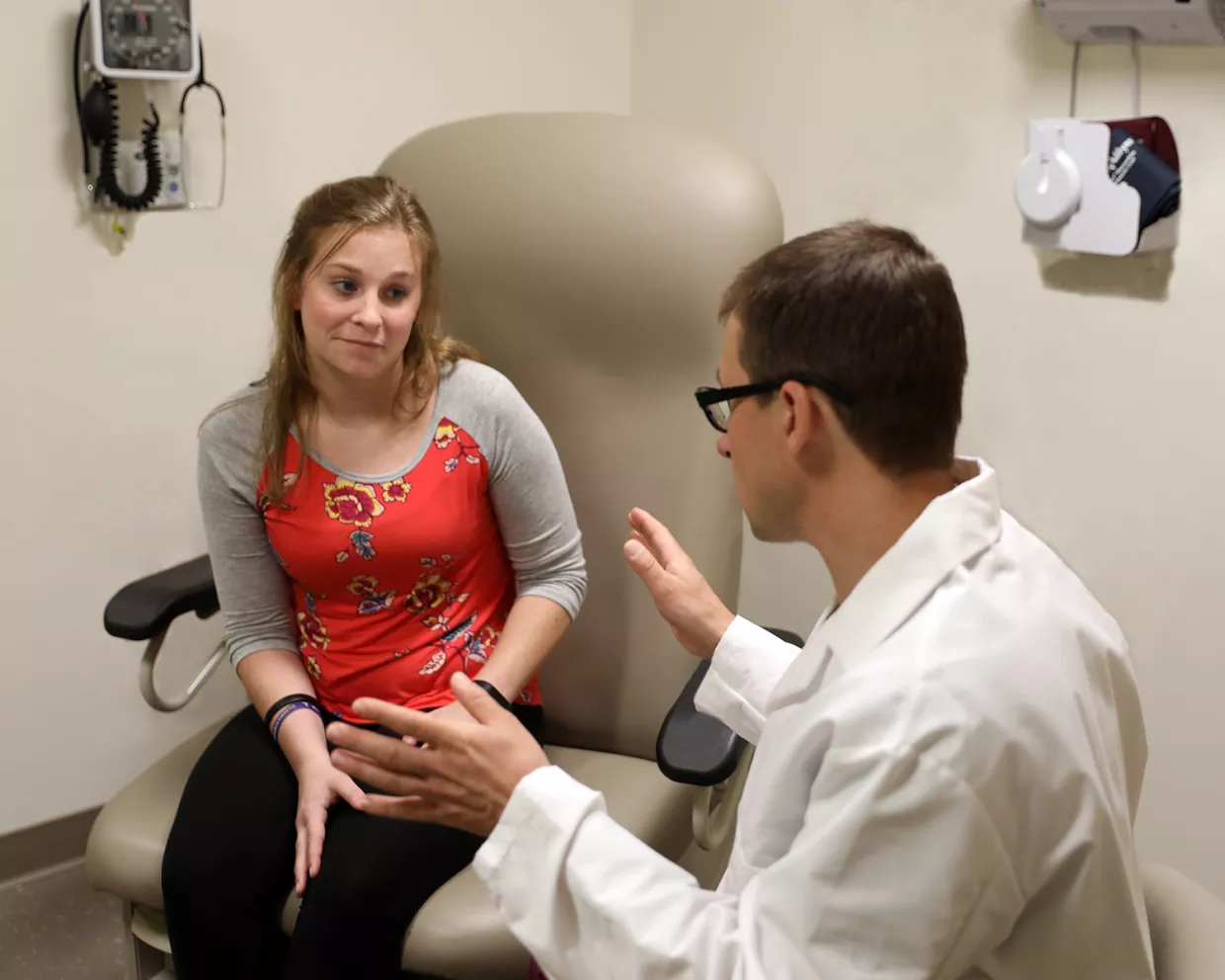Robotic surgery now an option for myasthenia patients needing thymectomy

Brooklyn Wexell, a 23-year-old teacher from Cambridge, Illinois, didn’t want to have surgery. But when Evgeny Arshava, MD, FACS, a cardiothoracic surgeon at University of Iowa Hospitals & Clinics, told her he could perform the potentially life-changing surgery through very small incisions in her chest using a robot – which would minimize both pain levels and scarring – she changed her mind.
“The diagnosis itself was really overwhelming, and then the surgery – I didn’t want it at first,” says Wexell.
Brooklyn was diagnosed with myasthenia gravis (MG) disease, a chronic neuromuscular disease that causes weakness in skeletal muscles – the muscles responsible for breathing and moving parts of the body. The muscle weakness is the result of a transmission error between nerve impulses and muscles.
Always a fit person, Brooklyn was active in volleyball and running. She was constantly on the go, and considered herself to be in pretty good shape. Shortly after starting college in 2013, however, things started to change. Her vision deteriorated, and she was prescribed contacts and things improved for a while. At the same time, she began to notice the rest of her body changing. She was getting tired, feeling worn down, and wasn’t able to do all of the things she could do before.
“I’ve always been an athletic person, and suddenly I can’t even do a pushup anymore,” Brooklyn says.
The weakness became even more evident when, as she was helping a friend move, she dropped a box of dishes she’d been carrying.
“My arms just gave out,” she recalls.
Her Mom, Candace Wexell, thought she was just tired from trying to do too much in college. Her symptoms became tolerable, and she finished school.
By 2018, Brooklyn was experiencing double vision and had a sharp pain on the right side of her head. She went to the doctor, and was referred to the UI Heart and Vascular Center.
Arshava recommended Brooklyn have a robotic thymectomy – a surgical procedure using a surgical robot to remove her thymus gland.
The thymus gland, located in the chest behind the breastbone, is normally largest and most useful during childhood to build immunity, but then eventually begins to shrink and by adulthood is replaced by fatty tissue. The gland is believed to play a key role in myasthenia gravis, and is removed in majority of patients with this autoimmune disease.
Typically, surgery to remove the thymus gland involves the cutting of the breastbone (similar to open heart surgery) to gain access to the gland. With the robotic surgery, smaller incisions are made between the ribs, leaving the breastbone intact. The robotic surgery involves a video which provides three-dimensional imagery and more flexibility moving the instruments. Because of its precision and flexibility, robotic surgery also results in smaller incisions, which generally means less pain and shorter hospital stays.
“The thymus gland has no significant role in adults,” Arshava says. “However sometimes people can develop tumors or other kinds of abnormalities in the gland.”
That’s what happened with Brooklyn.
She had her surgery on Aug. 20, 2018, and was back to work – she’s a behavior/special education teacher and volleyball coach – the following week.
Brooklyn noticed marked improvement in her strength and stamina already within days after operation.
Arshava says doing operation through small incision, in her case using the robot, has been instrumental in reducing pain for many patients requiring this kind of surgery.
“Doing surgery on patients with myasthenia has been challenging in the past because most have had to be on steroids to control symptoms which impairs proper healing of the bone,” he says. This is not an issue with minimally invasive surgery. “There is clear evidence that removing the thymus improves symptoms in great number of patients with myasthenia gravis.”
About UI Heart and Vascular Center
University of Iowa Heart and Vascular Center is home to more than 60 of the nation’s most experienced and highly trained cardiologists, cardiothoracic and vascular surgeons using state-of-the-art technology. Patients can access the latest heart and vascular treatment options and procedures via the main campus outpatient clinic in Iowa City, at the easy-to-access Iowa River Landing clinic in Coralville, or at one of the 12 outpatient clinics across eastern Iowa. New cardiology patients can be seen within 48 hours of requesting an appointment, ensuring the right treatment, at the right time, by the right specialists. University of Iowa Health Care is changing heart care and changing lives.